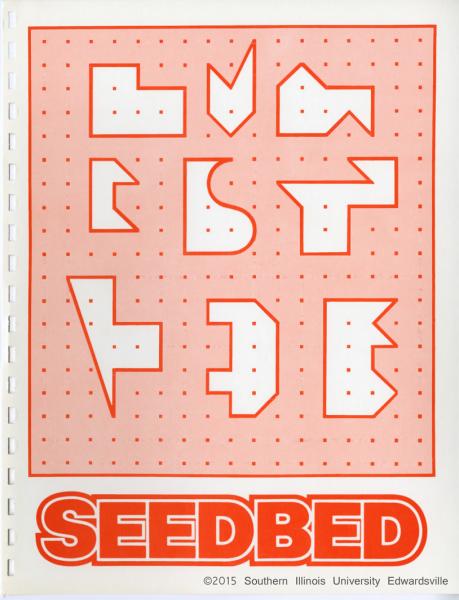Seedbed Number 16 - CARLI Digital Collections Featured Image

Being that historical and archival documents often serve as the source material, it’s no wonder that digital collections tend to be dominated by black and white. As another monotonous, gray winter nears its end, it occurred to me that a little bit of color would be nice--but not too much. At this point in the season, anything more colorful might be optically overstimulating.
SMTJ is one of six new collections published to CARLI Digital Collections since the start of the calendar year. I think it’s fair to say that math lit isn’t the likeliest source for pretty color images, but even stuffy academic journals (or niche publications on horticultural math, a possibility suggested by the title) sometimes feature interesting cover art. I guessed right about the covers, wrong about the content.
Published by the Teachers’ Center Project at SIUE from 1979 to 1993, Seedbed’s purpose was the cultivation of young minds, providing an almost zine-like forum in which a network of school teachers could exchange ideas. Produced on a typewriter with hand-drawn illustrations, each issue is a mélange of practical classroom activities and thought pieces on almost any subject related to the intellectual development of children. While math was at the forefront of participants’ concerns, it was by no means the journal’s exclusive focus. The language arts received frequent coverage, and a single issue might range the topical gamut from creationism to creativity (see #9).
What strikes me about Seedbed is its timelessness. The ideas remain relevant; the activities could easily be used in classrooms today. Sadly, U.S. educators are still struggling with how to teach math and related cognitive skills.
Back to that cover design, in all its monochromatic glory: Despite a suspicious resemblance to typographic experiments involving pegboard and office supplies, it is, in that regard, simply a group of shapes arranged three-by-three. Actually, it’s part of a congruent halves problem presented in issue #16, an example of the ideas shared by teachers for teachers via Seedbed.
Written by Ellen K. Corrigan, Associate Professor, Cataloging Services, Booth Library, Eastern Illinois University
For more information about this and other CARLI Digital Collections, visit http://collections.carli.illinois.edu

